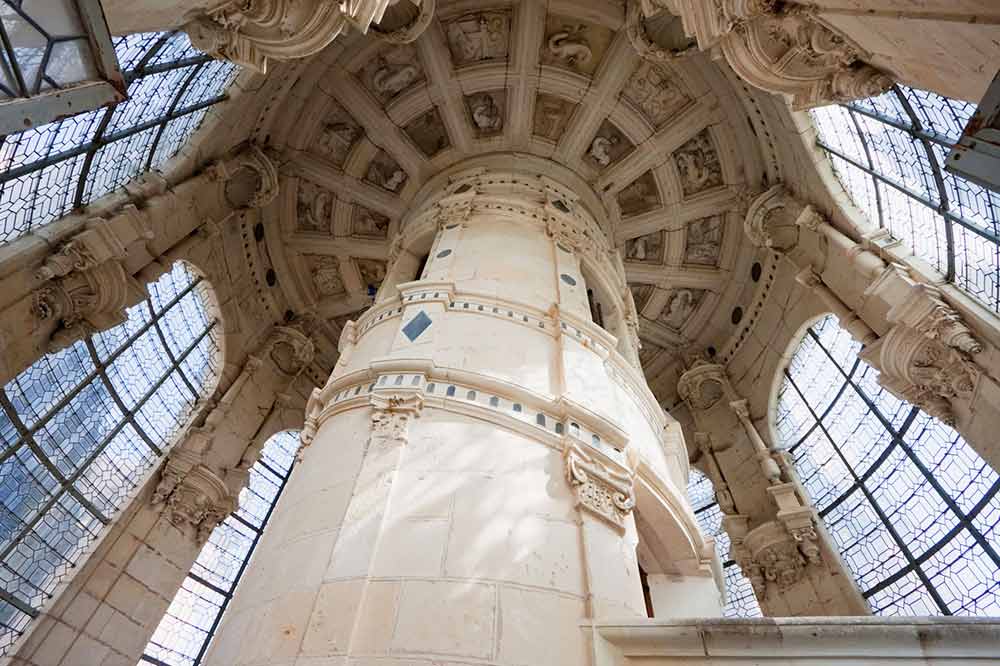From Oh La La!:
To celebrate his victory at Marignan, François 1er, new king of France, decided in 1516 to build a palace in Sologne to his glory. The construction project is nourished by the humanism of Alberti who defined the principles of Renaissance architecture, and work began in 1519. Initially, the castle of Chambord was to serve as a hunting castle, annexed to the Blois Castle. The first project drawn up by François 1er only provided for the construction of a castle-dungeon, confined on all floors to four round towers. The story goes that at that time, Leonardo da Vinci, who was staying in Amboise, would have participated in the development of the plans for the castle of Chambord alongside the architect Domenico Bernabei da Cortona. Following the imprisonment of François 1er in Madrid in 1525, work on the castle of Chambord was interrupted until 1526 and the king decided, on his return, to enlarge Chambord by adding two side wings to the keep. For several years, some 1,800 workers were busy building the castle and in 1539, François 1er received Emperor Charles V there. The royal wing, located in the north tower, was completed in 1544 and an exterior gallery and a spiral staircase were added in 1545. François 1st died in 1547, after 32 years of reign and ultimately only lived 42 days at the Chambord estate. Unfortunately, the castle did not arouse the interest of the kings who succeeded François 1er: Henri III and Henri IV did not stay there and Louis XIII only visited it twice during his reign. It will be necessary to await the advent of Louis XIV to see completed the project of François 1er. Louis XIV entrusted the work to the architect Jules Hardouin-Mansart, as for the Palace of Versailles, and the work was finally completed in 1686. In 1844, the new owner of the castle of Chambord, Henri Dartois, Duke of Bordeaux, undertook work to develop the park and restore the castle, following the multiple lootings that had taken place for decades on the estate of Chambord abandoned. (Read more.)
Share



















1 comment:
Awesome!
Post a Comment